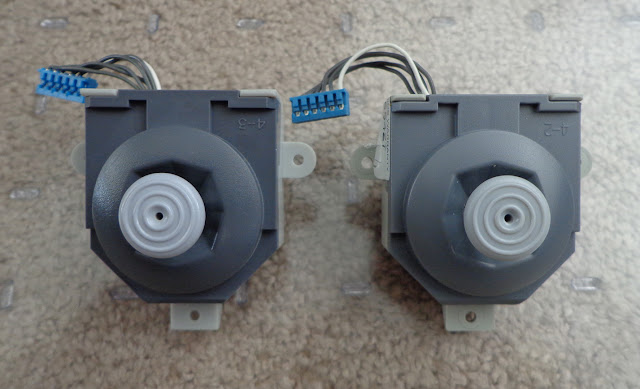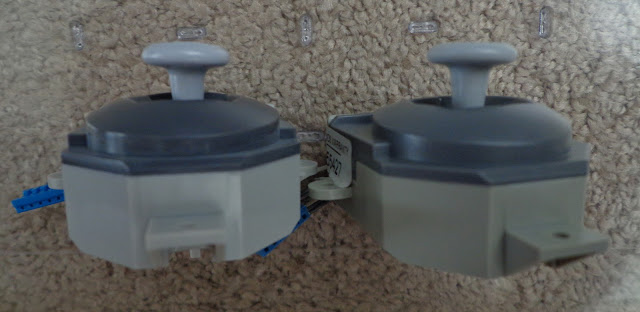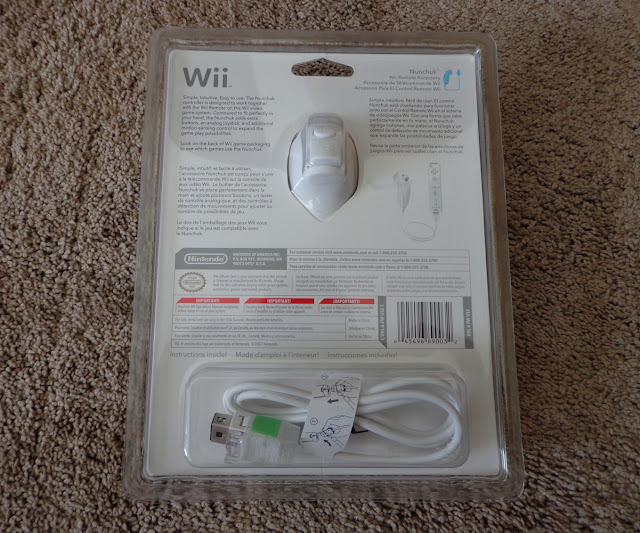About a couple years ago I purchased a replacement analog stick for one of my Nintendo 64 controllers. The original analog stick had gotten a bit loose and worn out, so I picked up one of the reproduction units off Ebay. After I swapped out my old analog stick for the new one, I quickly noticed a difference. The reproduction just wasn't the same, and I didn't really like it.
Reproduction Nintendo 64 analog sticks have two distinct flaws that immediately give them away. First, the top of the stick is totally flat whereas an official analog stick is slightly convex. That means your thumb won't grip the reproduction stick as well as an official one.
Second, reproduction sticks don't have the same amount of resistance when you move them. There's less resistance. Anyone who has played hours on end of Nintendo 64 goodness will probably notice some difference using the reproduction sticks.
I finally got tired of it, so I decided to buy a used Nintendo 64 controller off Ebay with a nice and tight analog stick and perform myself a little surgery. I bought a controller with a damaged cord that no one would really care about, and removed that sweet analog stick from its carcass.
The donor controller is the Atomic Purple one on the left. My controller (with the shitty reproduction analog stick) is on the right.
With a small enough Phillips-head screwdriver, you can remove the screws on the back of your controller and get access to the circuit board and everything else. Just don't lose those tiny screws.
Once inside the controller, you can remove the analog stick by undoing three additional screws holding it in place, and unplugging the blue connector (very carefully) from the circuit board. Then you end up with this:
As you can see here, both the factory original and reproduction analog sticks look the same at first glance, although a reproduction unit has slightly lighter-colored plastic (you probably won't notice unless they're side-by-side:
However, if you take a good look, you can see how the factory original analog stick is slightly convex on top, whereas the reproduction unit is totally flat:
The factory original stick also has serial numbers printed on the back:
After swapping out the analog sticks, I'm happy to say that my controller is back to 100% factory original condition, and it feels great. I won't be buying any more of these reproduction items as they're just not the same.
And no parts were wasted either. I'll be selling the donor controller in a fully functioning condition so that it doesn't go to the garbage bin. Talk about catch and release.
Here are the results of the successful surgery:
Monday, February 22, 2016
New Nunchuck
The rubber grip on one of my Wii's nunchucks has gotten a bit worn out, so I decided to buy a new one. Wii controllers are still being manufactured and sold in stores, so they're dirt cheap. If you need new controllers or just want to stockpile for the future, now is the time to do it.
I picked up a launch version nunchuck with the original blister packaging for only $17.
Nintendo changed to a cardboard packaging for the Wii Remotes and nunchucks a few years into the Wii's lifespan, and I noticed that Nintendo also changed the type of plastic in the controllers themselves. Later model Wii controllers have a rougher plastic that's easier to grip, as well as stiffer buttons. The earlier versions have a smoother plastic.
The later versions of the controllers aren't bad at all; they're just different. But I figured I'd replace my nunchuck with the same version. These are the odd things you notice when you play video games for hours on end.
I picked up a launch version nunchuck with the original blister packaging for only $17.
Nintendo changed to a cardboard packaging for the Wii Remotes and nunchucks a few years into the Wii's lifespan, and I noticed that Nintendo also changed the type of plastic in the controllers themselves. Later model Wii controllers have a rougher plastic that's easier to grip, as well as stiffer buttons. The earlier versions have a smoother plastic.
The later versions of the controllers aren't bad at all; they're just different. But I figured I'd replace my nunchuck with the same version. These are the odd things you notice when you play video games for hours on end.
Subscribe to:
Posts (Atom)







